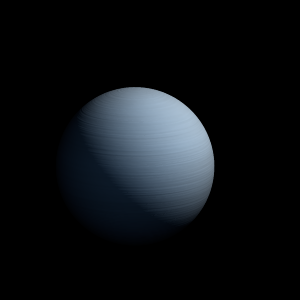|
|
Space Astro
|
Info for exoplanet "Mnegel"
| Scientific (actual) data |
|---|
| Name | WASP-160 Bb |
| Planet status | Confirmed |
| Planet mass | 0.281 |
| Radius | 1.093 |
| Orbital period | 3.7685 |
| Semi major axis | 0.0455 |
| Orbit eccentricity | 0 |
| Inclination | 89.02 |
| Discovered | 2018 |
| Updated | 2024-08-01 |
| Tzero tr | 2457380 |
| Impact parameter | 0.19 |
| K | 39.9 |
| Publication | Published in a refereed paper |
| Detection type | Primary Transit |
| Mass measurement type | Radial Velocity |
| Radius measurement type | Primary Transit |
| Alternate names | TOI-2464.01 |
| Star name | WASP-160 B |
| Right ascension | 87.68° |
| Declination | -27.62° |
| Mag v | 13.09 |
| Star metallicity | 0.389 |
| Star mass | 0.89 |
| Star radius | 0.872 |
| Star sp type | K0V |
| Star age | 8.24 |
| Star temperature | 5302 |
| Star alternate names | TOI-2464 |
| Wikipedia article | WASP-160 Bb |
Back
| |
| Fictional info (?) |
|---|
| Suggested name | Mnegel |
| Planet type | Hot gas giant |
| When viewed from Earth, this proximity to WASP-160 B means the planet can only be seen near the western or eastern horizon during the early evening or early morning. The planet telescopically displays the complete range of phases, similar to Venus and the Moon, as it moves in its inner orbit relative to WASP-160 B, which reoccurs over the so-called synodic period approximately every 93 days.
Its north and south poles, therefore, lie where most other planets have their equators. |
| Atmosphere | Ethane | 72% |
| Ammonium hydrosulfide (NH4SH) | 18% |
| Hydrogen deuteride (HD) | 7.7% |
| Nitric oxide | 1.6% |
| Atmospheric pressure | 8 bar |
 |
| No known satellites |
| Google search for Mnegel |
|
Website by Joachim Michaelis
|
|
|
|